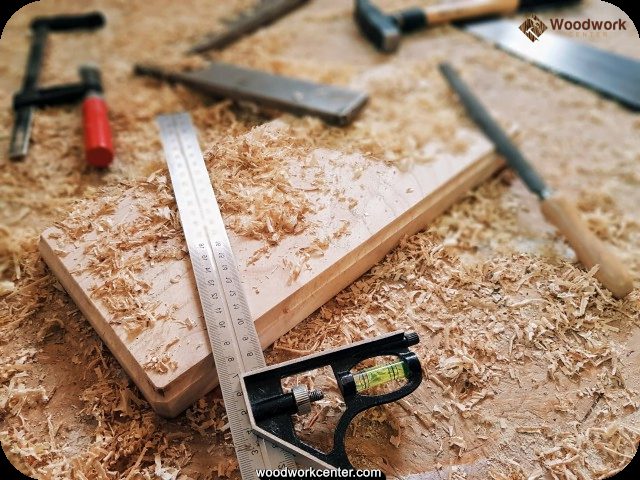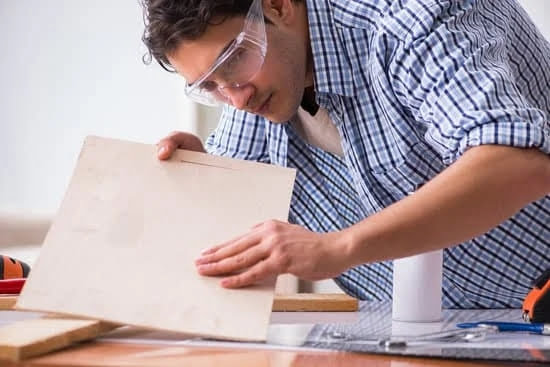Are you considering building your own bed frame? With the right woodworking bed plans, you can create a well-crafted and sturdy bed that suits your style and needs. Woodworking bed plans provide detailed instructions and guidance for constructing a bed frame from scratch, allowing you to customize it to your preferences.
In this article, we will explore the importance of having a well-crafted bed and provide a brief history of woodworking bed plans. Whether you are an experienced woodworker or just starting out, these plans can be a valuable resource for creating a beautiful and functional piece of furniture for your bedroom.
A well-crafted bed is essential for ensuring a good night’s sleep and overall comfort. With the right woodworking bed plans, you can build a bed frame that meets your specific requirements in terms of size, design, and materials.
Additionally, by using woodworking bed plans, you have the opportunity to create a truly unique piece of furniture that reflects your personal style and craftsmanship. Throughout history, woodworking bed plans have played an important role in providing individuals with the knowledge and skills needed to construct their own beds, resulting in custom-made pieces that stand the test of time.
Before delving into the specifics of woodworking bed plans, it is crucial to understand the different types of wood suitable for constructing a bed frame. The choice of wood will impact the overall strength, stability, and appearance of the finished product. We will discuss various types of wood commonly used for bed construction, along with their respective pros and cons.
Sustainability and eco-friendly options will also be explored to ensure that your woodworking project aligns with environmental considerations. So let’s begin our journey into the world of woodworking bed plans as we set out to create the perfect custom-made piece for your bedroom.
Choosing the Right Wood for Your Bed Frame
When it comes to woodworking bed plans, one of the most crucial decisions you’ll make is choosing the right type of wood for your bed frame. The type of wood you select will not only impact the overall look and feel of your bed, but also its durability and longevity. Here are some considerations to keep in mind when selecting the perfect wood for your project:
- Hardwood: Examples include oak, maple, cherry, and walnut. These woods are known for their strength and durability, making them ideal for bed frames that will last for generations.
- Softwood: Common options are pine and cedar. While softer than hardwoods, they are more affordable and easier to work with, making them a popular choice for DIY woodworking projects.
- Engineered Wood Products: Materials like plywood or MDF (medium-density fiberboard) offer stability and uniformity, and can be a budget-friendly alternative to traditional solid wood.
Each type of wood has its own pros and cons. Hardwood is known for its beauty and resilience but can be more costly, while softwoods are easier to work with but may not hold up as well over time. Additionally, sustainability is an important consideration in today’s eco-conscious world. Look for sustainably sourced or reclaimed wood options to lessen your environmental impact.
Ultimately, the best choice of wood for your bed frame will depend on your personal preferences, budget, and the desired aesthetic of your finished piece. Now that you have some understanding of the different types of wood available for your woodworking bed plans, you can make an informed decision when selecting the material for your project.
Tools and Materials Needed
When embarking on the journey of woodworking bed plans, it’s crucial to have the right tools and materials at your disposal. Building a sturdy and durable bed frame requires a comprehensive list of tools, ranging from basic hand tools to power tools.
Some essential items you’ll need include a tape measure, hammer, hand saw, power drill, and sandpaper. Additionally, having high-quality hardware such as screws, nuts, and bolts is essential for ensuring the longevity of your bed frame.
In terms of materials, the type and quality of wood you choose play a significant role in the overall strength and aesthetic appeal of your bed frame. Some popular choices for bed construction include hardwoods like oak, maple, cherry, and walnut due to their durability. Softwoods like pine and cedar are also options and are often preferred for their affordability. When sourcing materials for your woodworking bed plans project, it’s important to prioritize quality while also considering your budget.
For those looking for affordable yet high-quality supplies for their woodworking bed plans project, it’s advisable to explore local lumberyards or online suppliers that offer a wide selection of wood species at competitive prices. Not only can this help keep costs down, but it also provides access to a variety of wood types suitable for different design preferences. Ultimately, investing in the right tools and materials will contribute to the successful completion of your DIY bed frame project.
Step-by-Step Instructions for Building a Bed Frame
Building a bed frame from scratch may seem like an intimidating task, but with the right woodworking bed plans and guidance, it can be a rewarding and enjoyable project. Before getting started, it’s important to gather all the necessary tools and materials. Some essential tools for this project include a saw, drill, sander, measuring tape, and wood glue. In terms of materials, you’ll need high-quality lumber such as pine, oak, or maple, depending on your preference.
Once you have all the tools and materials ready, the next step is to carefully measure and cut the wood according to the dimensions specified in your chosen woodworking bed plans. Precision in measurements is crucial to ensure that all pieces fit together seamlessly. Following this, assembly of the bed frame can begin. This typically involves joining the pieces using screws or wood joints.
While working on your woodworking bed plans project, it’s important to prioritize safety at all times. This includes wearing appropriate safety gear such as goggles and gloves when operating power tools and being mindful of proper lifting techniques when handling heavy lumber. In addition to safety precautions, it’s also essential to pay attention to best practices for working with wood in order to achieve professional-looking results.
Here are some tips for achieving precise cuts and perfect joints while building a bed frame:
- Use a high-quality saw blade
- Clamp down the wood securely before cutting
- Take your time with each cut to ensure accuracy
Lastly, once the bed frame is assembled, you can apply your chosen finish whether it be staining, painting or varnishing. This not only enhances the appearance of the wood but also protects it from wear and tear over time.
| Tools Needed | Materials Needed |
|---|---|
| Saw | Lumber (pine/oak/maple) |
| Drill | Wood Glue |
| Sander | Screws/Wood Joints |
Finishing Techniques
Woodworking bed plans not only provide the convenience of building a custom bed frame, but they also allow for personalization and customization. One important aspect of creating a stunning and durable wooden bed frame is the finishing technique. The finish not only enhances the natural beauty of the wood but also protects it from wear and tear over time.
Choosing the Right Finish
When it comes to finishing a wooden bed frame, there are several options to consider. Staining the wood can enhance its natural color and grain, while painting allows for endless customization in terms of color and design. Varnishing, on the other hand, provides a protective layer that not only enhances the appearance but also adds durability.
Application Tips
Regardless of the chosen finish, achieving a professional-looking result requires proper application techniques. When staining or varnishing, it’s crucial to apply thin coats and allow each layer to dry completely before applying the next. For painting, using high-quality brushes or sprayers can make all the difference in achieving a smooth and flawless finish.
Maintenance and Protection
Once the bed frame is finished, proper maintenance is essential to ensure its longevity. Regular dusting and cleaning can prevent dirt and grime from building up on the surface. Additionally, using coasters or protective pads for items placed on the bed frame can prevent scratches and damage. Applying an additional coat of finish every few years can also help maintain its beauty and protection.
By paying attention to finishing techniques when following woodworking bed plans, individuals can create a beautiful and long-lasting bed frame that suits their style and preferences. Whether opting for a natural wooden look or incorporating unique designs with paint or stain, the finishing process plays a crucial role in bringing out the best in any woodworking project.
Customization Options
When it comes to woodworking bed plans, one of the most exciting aspects is the opportunity for customization. Building your own bed frame allows you to personalize the design to suit your preferences and needs. Whether you want to incorporate extra storage space, unique features, or simply add a personal touch, customizing your bed frame can result in a one-of-a-kind piece of furniture that reflects your style.
For those looking to maximize space in their bedroom, consider integrating storage options into the bed frame design. This could include built-in drawers or shelves that can help keep the room organized and clutter-free. Additionally, incorporating unique features such as built-in lighting or charging stations can add both functionality and aesthetic appeal to the bed frame.
Another area for customization is the headboard and footboard designs. These components provide an excellent opportunity to showcase creativity and individuality. From intricate carvings to modern geometric patterns, there are countless ways to make a statement with these parts of the bed frame.
For those seeking inspiration for customization, there are numerous resources available online that offer woodworking bed plans with custom options. These plans often provide detailed instructions on how to incorporate specific features into the bed frame design.
Ultimately, customization allows woodworkers to create a bed frame that not only meets their practical needs but also reflects their personality and style.
| Customization Ideas | Benefits |
|---|---|
| Integrated storage options | Maximizes space and reduces clutter |
| Unique headboard and footboard designs | Adds visual interest and personal flair |
| Built-in features like lighting or charging stations | Enhances functionality and convenience |
Troubleshooting Common Issues
When undertaking woodworking bed plans, it’s important to anticipate and address common issues that may arise during the construction process. From misaligned joints to uneven cuts, troubleshooting these problems can be a daunting task for beginners. However, with the right knowledge and tools, these issues can be easily resolved, resulting in a sturdy and well-crafted bed frame.
Solutions for Common Problems
One of the most common issues encountered during woodworking bed plans is misaligned joints. This can occur due to inaccuracies in measuring and cutting the wood, leading to gaps and instability in the bed frame. To fix this problem, carefully assess the joints and use clamps to realign the pieces before securing them together. Additionally, using wood fillers or shims can help fill any gaps and create a more seamless connection between the pieces.
How to Fix Mistakes and Imperfections
In woodworking, mistakes are inevitable, especially for those new to the craft. Whether it’s a splintered wood surface or an uneven cut, there are ways to fix these imperfections without starting from scratch. Sanding down rough surfaces and edges can smooth out imperfections, while wood putty can fill in small cracks or holes. For larger mistakes, consider using wood dowels or reinforcements to strengthen weakened areas of the bed frame.
Preventing Future Issues
Once the bed frame is constructed, it’s crucial to take proactive measures to prevent future issues. Proper maintenance and care will prolong the lifespan of your wooden bed frame, ensuring its durability over time. This includes regular cleaning with a gentle wood cleaner, applying protective finishes such as varnish or sealant, and inspecting for any signs of wear or damage. By taking these preventative measures, you can enjoy your custom-built bed frame for years to come.
By understanding how to troubleshoot common issues in woodworking bed plans and learning how to fix mistakes that arise during construction, you can confidently tackle any challenges that come your way when building your own bed frame. With patience and perseverance, you’ll be able to overcome these obstacles and create a beautiful piece of furniture that will stand the test of time.
Resources for Woodworking Bed Plans
Building your own bed frame can be a rewarding and fulfilling project, but it’s important to have the right resources to guide you through the process. Fortunately, there are plenty of websites, books, and videos available to assist you in creating the perfect woodworking bed plans.
When searching for woodworking bed plans, it’s essential to find reliable sources that provide detailed and accurate instructions. Websites dedicated to woodworking often offer a wide variety of bed frame plans, including options for different skill levels and design preferences. Additionally, books authored by experienced woodworkers can provide valuable insights and step-by-step guidance for creating your own bed frame.
For those who prefer visual learning, instructional videos on platforms like YouTube can be incredibly helpful in understanding the intricacies of woodworking bed plans. Many skilled woodworkers share their expertise through video tutorials, offering demonstrations of various techniques and tips for achieving professional results.
In addition to online resources, community forums and support groups can also be valuable assets when undertaking a woodworking project. Engaging with fellow enthusiasts allows you to seek advice, share experiences, and gain inspiration from others who have embarked on similar ventures with woodworking bed plans.
With the right resources at your disposal, you’ll be well-equipped to take on the challenge of building a custom bed frame that suits your needs and style preferences based on the information provided by reliable sources for woodworking bed plans.
Conclusion
In conclusion, woodworking bed plans offer the opportunity to create a well-crafted and personalized bed frame that can be a centerpiece in any bedroom. By following the comprehensive step-by-step instructions, choosing the right wood, and using the necessary tools and materials, anyone can build a sturdy and beautiful bed frame. The satisfaction of completing such a project is immeasurable, and the customized options allow for a truly unique piece of furniture in your home.
Whether you are a seasoned woodworker or new to the craft, there are endless possibilities for customization when it comes to building a bed frame. From different wood finishes to unique headboard designs, the ability to personalize your creation is one of the many benefits of using woodworking bed plans. Additionally, troubleshooting common issues and proper maintenance techniques ensure that your finished product will stand the test of time.
As you embark on your woodworking journey, we encourage you to give woodworking bed plans a try. The sense of achievement and pride that comes from building something as essential as a bed frame with your own hands is unparalleled.
So gather your tools and materials, choose your wood wisely, follow our step-by-step instructions, and create a piece of furniture that you can truly call your own. And don’t forget to share this valuable resource with others who may also be interested in delving into the world of woodworking bed plans.
Frequently Asked Questions
Is It Cheaper to Build Your Own Bed?
Building your own bed can potentially be cheaper than buying a pre-made one, especially if you already have the materials and tools needed. However, it also depends on the quality of wood and other materials you choose to use.
What Is the Best Wood to Build a Bed With?
The best wood to build a bed with is often considered to be hardwoods such as oak, cherry, maple, or walnut. These woods are known for their durability and ability to withstand wear and tear over time.
Which Type of Wood Is Best for Bed?
When choosing the best type of wood for a bed, it’s important to consider factors like strength, durability, and appearance. Hardwoods like oak and maple are popular choices due to their sturdiness, while cherry and walnut offer a more elegant aesthetic. Ultimately, the best wood for a bed will depend on personal preference and budget.

Hi everyone! I’m a woodworker and blogger, and this is my woodworking blog. In my blog, I share tips and tricks for woodworkers of all skill levels, as well as project ideas that you can try yourself.





